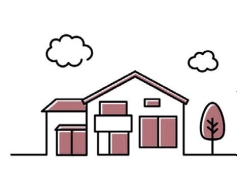
GOOD CHEERS: IDD residents Samantha Y., Erica A. and Clarise G. enjoy sharing time in the kitchen with their live-in caregiver.


During my 30 years working in the field of special needs housing, I've met so many moms, dads, siblings and other family members who worry about the future. Many of them believe the only real option is for their loved one to live at home, forever.
Living outside the family home poses many unknowns, including these three big questions:
- What does my family member need to live outside our family home?
- Who will they live with?
- How will we afford it?
These questions can be daunting. While it might be tough to think about now, it's important to plan for that day when your loved one may want to move out, or when you are no longer able to support your loved one at home. Many families find peace in exploring what supported housing might look like for their loved one, especially if they are not in a huge hurry or experiencing a crisis.
One solution that works beautifully for many families, and helps answer these three important questions, is a model called Shared Living. In this person-centered model, people with disabilities choose to live together, sharing the cost of housing and support services.
PUTTING THE PIECES TOGETHER
Unlike other housing models, the Shared Living model is completely family driven. Compatible individuals and their families work together to develop caregiver agreements and job descriptions. They decide whether to rent or buy. They develop household budgets and guidelines for the home. They hire caregivers, develop family commitment agreements, and decide how to provide coverage during the caregiver's days off or in emergencies.
Putting all the pieces together can feel like a jigsaw puzzle. Below are some things you can start doing now to be ready for whatever the future holds.
AVOID THIS COMMON "IN-KIND" MISTAKE TO MAXIMIZE YOUR LOVED ONE'S SSI
The federal Supplemental Security Income (SSI) program (ssa.gov/benefits/ssi) pays benefits to adults and children with
disabilities, who have limited income and resources. Once an individual turns 18, this benefit is based on the individual's income, not the family's income. The 2023 maximum benefit for an adult with disabilities is $914. Medicaid comes automatically with SSI, and Medicaid also funds state services.
The amount the individual receives depends on the individual's income; both earned income and "in-kind" income. SSI defines in-kind income as: "food, shelter, or both that you get for free or for less than its fair market value." If your loved one is living in your family home and not paying rent, the SSI benefit will be reduced by one-third.
The good news? Completing a simple rental agreement and submitting it to SSI will help ensure your loved one receives the full benefit amount.
BE PREPARED FOR THE STATE ASSESSMENT FOR MEDICAID WAIVER SERVICES
It's important to be prepared for your loved one's state Medicaid assessment, because this is how most state services are funded. Your local Arc (thearc.org/find-a- chapter) or other advocacy organization may be able to help you prepare. Understanding what will be considered during the assessment will help you present the right information to maximize your loved one's services from the state. Doing this while your loved one is living at home establishes the need for the services your loved one will need to thrive outside your family home.
GET ON THE WAITLIST FOR A SECTION 8 HOUSING VOUCHER
HUD's Housing Choice Voucher Program (Section 8) (hud.gov/topics/housing_choice_vouch- er_program_section_8) provides a valuable housing subsidy that makes rent more affordable. This is an important piece of the puzzle, if you are looking at a shared living solution. Section 8 waitlists are long, and it can take years to receive a voucher.